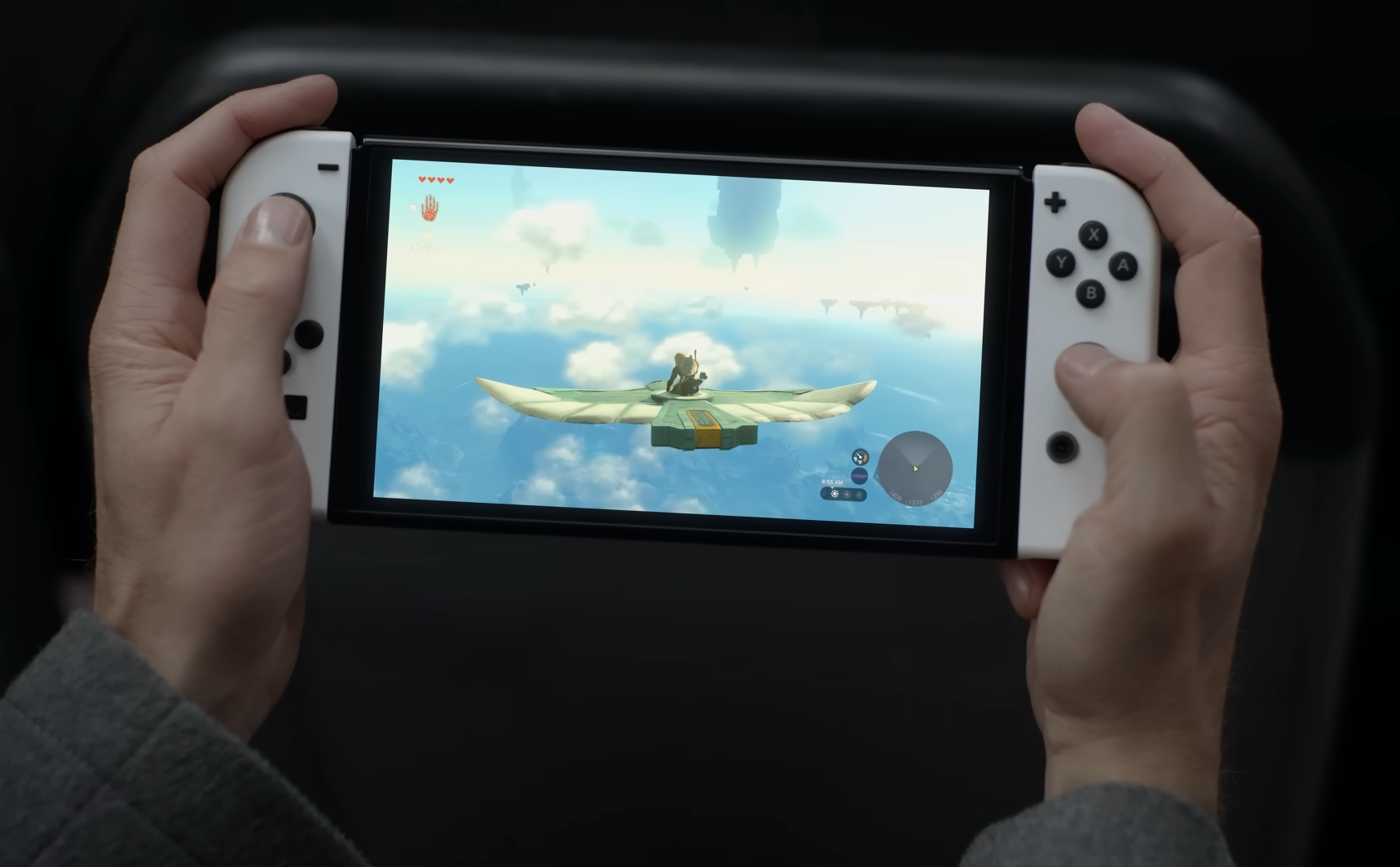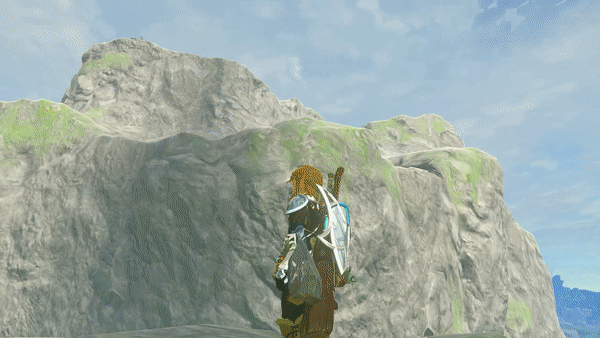The most revelatory part of 2017's The Legend of Zelda: Breath of the Wild was Hyrule's intriguing landscape that was captivating to traverse and explore. This process made up the predominant gameplay loop; you see something interesting in the distance – perhaps a mountain peak or a curious plume of smoke from a nearby campfire – and plan out a path to get there.
You could always try and make a beeline straight for your destination, but often this was impractical or impossible. You might not have enough stamina to go straight up a sheer cliff face or swim across a wide river against the current, so you'd need to get creative.
Much challenge and enjoyment could be found in thinking up a new path just to use the terrific and unique gameplay mechanics and Link's new abilities. Maybe you'd want to create a stepping-stone path across the river with Cryonis blocks, leapfrogging as you destroy the ones behind you to create more in front. Maybe there's a generously placed raft by the shore, that you could push into the water, filling the sails with gusts of wind from your Korok leaf.
Or maybe you'd want to chop down a tree, freeze it with Stasis as it fell, and then whack it with a hammer to accumulate momentum before climbing on and taking a free ride across Hyrule.

Breath of the Wild's outstanding 'tree launch' method, heavily used in speedrunning.
All of these options would leave you satisfied. It was the smallest of challenges, really. It wasn't a huge scary monster or an ancient Guardian rapidly crawling its way towards you. It was a natural challenge provided by the landscape. You want to explore? Figure out how.
When the first trailer for Tears of the Kingdom came out, my friends' group chat was filled with disappointment when we realised the game was set in the same Hyrule as Breath of the Wild. We'd all put hundreds of hours into the game by that point, climbing every peak, turning over every rock, and we wanted a fresh land to explore. Sadly, it looked like all Nintendo had done with the new game was sprinkle some islands in the sky and added a couple underground cave sections. We hoped there was more behind the scenes that they weren't showing us.
Then we waited a few more years. The game came out. And that's honestly what we got.
And... it's marvellous.
Playing the new game, I quickly realised what I took for granted with Breath of the Wild was that it wasn't merely the landscape itself which was interesting. Instead, it was the methods of traversal it offered that made exploration constantly exciting. There's a big difference between the two.
And when it comes to movement and traversal mechanics, Tears of the Kingdom cracks the entire game wide open.

It's insanely quick and easy to make a quick cart. It truly mystifies me how Nintendo made this work so well.
Making customisable vehicles has become one of the core mechanics of the game. So far, I've found a large portion of exploring the world map and completing shrine puzzles require you to Meccano together devices to accomplish some challenge like travelling across a body of water, up a staircase, or across a pit of lava. You need to make clever use of the Ultrahand ability to attach Zonai devices that generate movement, like fans, rockets, and wheels to larger structures you can conjoin together however you could possibly imagine.

Sometimes, our imagination fails us.
Korok challenges, one of the purest forms of tedium that has ever existed in gaming, require you to complete some sort of puzzle or physical test like climbing a mountain as fast as possible or shooting a peculiarly placed acorn just to hear a "Yah-ha-ha!" and be rewarded with a Korok Seed.
Seriously, there were 900 of these in Breath of the Wild and the reward for getting all of them was one of the most self-aware arbitrary game rewards I have ever seen: a literal pile of poop.
The new addition to the Korok challenges we got in Tears of the Kingdom involve you stumbling across a Korok in the middle of nowhere, helplessly weighed down by their enormous backpack. They're trying to get to their friend, indicated in the distance by a plume of green smoke, and you need to help them get there.
Yes, you could just pick them up with Ultrahand and carry them all the way… or you can get creative with the new additions to the game.
Sometimes the intention is obvious, but still fun to carry out. Here, I came across a Korok next to a cart, a fan, and a steering wheel, who needed to get to the bottom of a mountain.

I tried my best.
When you unlock the towing harness for your horse, you can carefully craft entire carts to transport things like the Koroks as well.

Or you can just drag them, Back to the Future III-style. Maybe it's what they deserve.
This new Korok challenge epitomises the design shifts that the developers have made for Tears of the Kingdom. Yes, the new game features changes to the landscape, but what's special about it is how the mechanics are actively changing you, the player.
This is the marvel of Tears of the Kingdom: the new mechanics have rewired the player to explore a similar landscape but in a fundamentally different way.
Exploration is, after all, one of the cornerstones of any video game, not to mention specifically for this style of open-world games. It's the basis of the curiosity that keeps us playing when we should probably take a break or keeps buzzing in the back of our heads as we go through our days impatiently waiting to get back to the Switch.
The new mechanics and abilities have redefined what exploration feels like. They also remind us that the changes in the map completely switch up the player's internal gamer compass to include verticality far beyond the previous highs of a mere mountain.

Ascend is probably my favourite addition. It just makes switching planes so seamless.
Ascend is a new ability Link can use to fly straight upwards, come into contact with a ceiling, and travel through it until he reaches the other side. It plays a fundamental role in traversing the new sky islands and caves that has freshened up the Hyrule landscape by diversifying verticality.
In Tears of the Kingdom, you'll come across new openings in rock walls or jump down wells and find newly included cave areas. Within these are all kinds of little animals, plants, and secret goodies you'd expect. They're also used in a variety of challenges as a method of traversal in and of themselves.
For example, for some side quests in Hateno village, to get inside two inaccessible buildings, you need to navigate the complicated cave system under the city connected by various wells, position yourself directly under the locked building, and fly through the cave ceiling to find yourself inside the room.
Each of these little puzzles and experimentations in diverse traversal methods leave me with an ear-splitting smile. They construct perfect moments where the new mechanics and the landscape perfectly fuse to make the game feel like it's still revealing so many secrets even after the hundreds of hours spend exploring it in the previous game.
The combination of new mechanics, abilities, and landscapes synergise to revitalise exploration in Tears of the Kingdom, even though the map has remained relatively similar. I often find myself in locations that I remember being in when playing Breath of the Wild, but the method I arrived there is consistently different, and the way that I will move from that location equally so.
The mechanic changes have ingeniously warped the world to feel completely different.
To coincide with the release of Tears of the Kingdom, Nintendo Australia put out a new ad for the game and the Switch.
The ad shows a guy in business wear taking the bus home after a hard day of work, seeming wearied of his daily commute and ultimately disillusioned with his life. He gets home just in time for his partner to head to bed, and so sits down alone at the TV to play some Tears of the Kingdom. He's enjoying the game but is struggling to construct a raft to sail across a small lake. After a couple attempts, he manages to make an effective raft, and he smiles to himself.
In the next scene, he's back on the bus, but now he's completely absorbed in his Switch, body jerking left and right as he cleverly times some backflips out of multiple bokoblin attacks, emerging victorious from the battle.

He soars through the sky on the Flying Zonai device and looks outside - the first view of nature in the ad - and notices a beautiful beach. It looks as if he's seeing it for the first time on what has become his eternal commute – and smiles.
The fact that this ad is based off a true story makes it all the more potent.
The phrase that caps off the ad perfectly captures the power of the console and the game: "Play, connect".
The Switch offers us mobility in how we engage with our games. Now, we can play the same games on the go or on the couch, easily interchanging between the small screen or the big screen. In Tears of the Kingdom, we learn to mobilise ourselves fully. It takes place in a landscape we already know, controlling a body than we already know the basic movement functions, and then cracks the whole world open with its new mechanics and abilities, allowing us to re-experience Hyrule in all its glory by flexing our creativity.
In my eyes, this is the power of movement systems in video games. They can give us feelings of movement and adventure when we might not be able to experience them in our daily lives because of work, family commitment, bodily ability, or financial status.
But in learning to control and develop the movement abilities of the characters in game, such as learning in Tears of the Kingdom how to build a raft, a fan-powered jet, or in my case, a rocket-powered tree, we can grasp our own agency.

Me grasping my agency.
Just as the guy in the ad is able to recognise the beach that was previously inaccessible, or the story the review was based on involved someone realising a real mountain could become an actual visitable location rather than extricated from himself, video games can empower us to engage with our real-life agency and ability to explore our own world.
As of writing this, I definitely haven't experienced every addition this game has included, and there are a bunch of things I've left out to keep this relatively short, but these were my thoughts on the primary mechanics through my first 30 hours of playtime.
Anyway, I'm off to empower myself by finding and terrorise every Korok until they give up the seeds. Again, I truly think it's what they deserve.
Before you move on, why not give our Facebook page a like here. Or give our Twitter account a follow to keep up with our work here.
